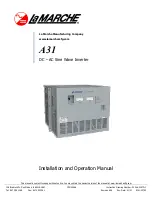
FMUSER INTERNATIONAL GROUP INC.
广州市汉婷生物技术开发有限公司
43
13
Universal Encoder Communication Protocol (UECP)
The UECP protocol is an industrial standard for RDS encoder control to facilitate the inter-working of various RDS
systems components regardless of the supplier. Due to the fact that it cannot handle specific functions and characteristics
of a particular model, it must be considered as a complementary method of the RDS encoder control. Its implementation in
the RDS-C is only partial. It should provide a possibility of basic RDS services control for the UECP based systems
whereas other services have been set in advance using the way described on previous pages.
13.1.1 To turn-on the UECP support
1. Configure all RDS services and settings as required.
2. Where required, configure the RDS encoder address and Site address using the commands
*ADR=
and
*SITE=
or using the Windows control software.
3. Find out and set the right baudrate (speed).
4. The UECP support is disabled by default. Type UECP=1 or use the Windows control software to turn-on the
UECP support.
13.1.2 General UECP frame format
Note: Read more information about the UECP in the document "SPB 490 Universal Encoder Communication
Protocol" (published by 3rd party).
13.1.3 UECP addressing
The address field comprises two elements, these are:
• Site address, 10 bits (most significant)
• Encoder address, 6 bits (least significant)
For a message to be acceptable to a particular encoder both the site address and the encoder address must
be contained within the respective address lists of the RDS encoder.
If the Site address is set to 0, any Site will accept the record. If the Encoder address is set to 0, any Encoder in the
Site will accept the record. It's not important for the UECP reception if the RDS encoder is selected or not (command
SEL
).










































